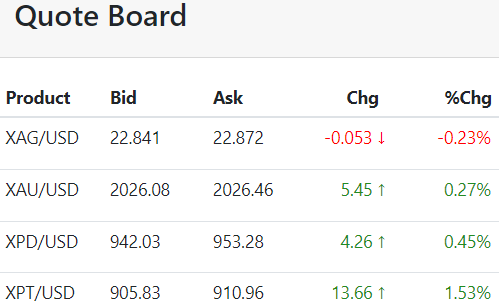Blog
Morning Call
Tuesday, January 30, 2024
Zaner Daily Precious Metals Commentary
Monday, January 29, 2024With a three-day high and a developing pattern of higher highs and higher lows, the technical picture for gold has improved.
However, with a stronger Dollar to start, the positive start in gold and silver might indicate the metals are embracing flight to quality uncertainty from China which saw a major property company forced by a Hong Kong Court to liquidate its assets.
The markets continue to see chatter regarding rate cuts from the ECB and stories suggesting the Fed is already acting which signal a pivot...[MORE]
Please subscribe to receive the full report via email by clicking here.
Gold gains on Middle East risks; Fed meeting in focus
Monday, January 29, 2024Morning Call
Monday, January 29, 2024
Zaner Daily Precious Metals Commentary
Friday, January 26, 2024While the CME Fed watch tool pegs the probability of rate cuts in the January, March, and May Fed meetings at 2.6%, 48.1%, and 50.1% respectively we feel there is a slightly higher whisper expectation for a rate cut in the market.
However, with the Feds favored inflation measure (PCE) scheduled for release today and expectations calling for a +0.2%, the prospect of a near-term cut in US rates should remain very small.
In fact, to see a rate cut by the June meeting will likely require some contractionary monthly PCE readings...[MORE]
Please subscribe to receive the full report via email by clicking here.
Gold hemmed in tight range as US inflation data looms
Friday, January 26, 2024Morning Call
Friday, January 26, 2024
Zaner Daily Precious Metals Commentary
Wednesday, January 24, 2024With outside market forces of lower US rates and a weaker US dollar, both gold and silver started the Wednesday trade with a relatively strong bid.
In fact, as of this writing the dollar sat just above a downside breakout and a six-day low which could result in gold and silver adding to the early noted gains.
For a change, the silver market could take a leadership role with Fresnillo projecting 2024 silver production to be 7 million ounces below 2023. Unfortunately for the bull camp, Fresnillo also posted a 13% year-over-year increase in silver production for 2023...[MORE]
Please subscribe to receive the full report via email by clicking here.